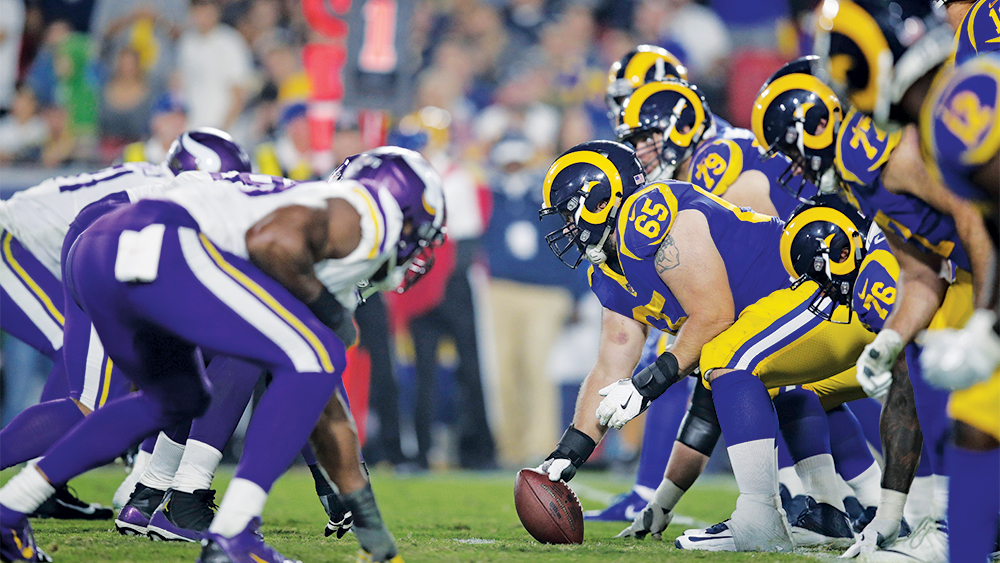North American sports have had varying degrees of success when attempting to branch out into parts of Asia, both from a participation and spectator perspective.
Baseball, for example, has proved enormously popular in Japan, South Korea and Taiwan, with these nations hosting highly competitive leagues – the Nippon Professional Baseball (NPB) in Japan, the KBO League in South Korea, and the Chinese Professional Baseball League serving Taiwan – which attract huge amounts of fans.

As such, there is a large interest in these countries for Major League Baseball (MLB), particularly as numerous players from Japan, South Korea and Taiwan have successfully made the switch to MLB. The league is broadcasted on TV networks and merchandise is readily available, while the increase in online sports betting in the Asia-Pacific region has also seen the betting markets enjoy a boost in popularity.
Meanwhile, basketball has been North America’s most successful sporting export, with the game played across all of Asia and official leagues active in more than 20 countries. However, it is in the Philippines where basketball enjoys similar levels of success as baseball does in Japan.
As the pinnacle of professional basketball, the NBA has a huge following across much of Asia, and with a steady stream of Asian players making it to the league, basketball fans in Asia are given even more reasons to tune in.
But what about American football and the NFL – the most watched and financially lucrative of North America’s Big Three sports? The game itself, from a participation standpoint, has not taken off as widespread as basketball or embedded itself into certain nations’ cultures, like baseball.
There are leagues in India, Japan, the Philippines and China. Yet so far, any attempts to place American football on the sporting landscape have been quite limited.
Equally, interest in the NFL – American football’s flagship league – has not swept across Asia the way it has in Europe. Granted, there are approximately 19 million active NFL fans in China, and while that does suggest an encouraging number, it still only accounts for less than three per cent of the population.
Indeed, interest in the NFL is only likely to surge in Asian countries should players from these countries make it to the league, similarly to baseball and basketball players reaching the MLB and NBA respectively. At present, this seems a long way off.
Additionally, the prospect of an NFL franchise in any part of Asia or the Middle East seems an impractical possibility. London has been campaigning for a good number of years to have their own NFL franchise and argue that their location from the USA’s East Coast make it as practical a location as the American West Coast, while there is a thriving community of NFL fans who would follow a London-based team and regularly fill out a stadium.
Can any country or city in Asia argue that they have a practical location and large enough fanbase to make an NFL franchise a viable option? Hardly.
So, with American football struggling to make significant headway and with interest in the NFL comparatively low compared to the MLB and NBA, how does the organization reach out to a part of the world that has always been viewed as a potential gold mine?
The NFL’s best hopes of engaging with an Asian audience is, quite simply, through digital content. With mobile technology getting into the hands of an increasing number of people around the world, particularly in Asia, the NFL can now be accessed by anyone with a smartphone.
What the NFL must do, however, is to tailor a certain content strategy to the Asian market in order to capture the attention of people who do not have a previous affinity with the game or league. How do you get a demographic of people to fall in love with your sport and league who do not play the sport and do not have any knowledge of, or local representation in, the league?
What is the approach to take when you are essentially starting from scratch? It is not enough to just have access to live streams and stats. Maybe include Asia and China, specifically, in the NFL preseason schedule could be one way to start.
This is the mindset the NFL must adopt if they are to have any chance of entering the Asian market – a market where their sport is not ingrained in the culture and is not widely played.
American football and the NFL are never likely to earn the same reach as baseball and basketball in Asia – after all, participation remains the most important factor to a sport and league’s success – but they can generate an increase in interest if they approach the region correctly.
[This article is written by Jonathan Turner]
